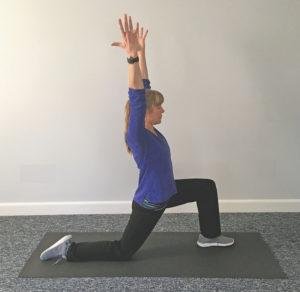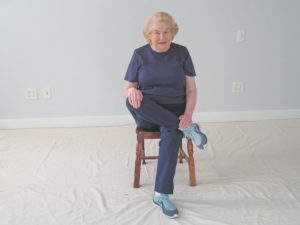Some things we do mainly because we’ve always done them. For me, stretching is one. When I was a 12-year-old aspiring gymnast, I stretched before class because the coach told me to. In physical therapy school, we learned all sorts of science-y explanations about how stretching could improve range of motion, decrease injuries, and even help injured tendon fibers heal in a more orderly way. I recommended stretching accordingly.
Now that supposed wisdom is being put to the test as therapists, coaches, and trainers build evidence-based programs. And there’s a hot debate going on about stretching. Researchers are looking especially at static stretching (moving one or more joints to the point of muscle tension and holding for at least several seconds) versus dynamic mobility exercises (repeatedly taking the joint through a full range of motion without pausing).
Static stretching appears to actually decrease performance if what you’re looking for is speed and strength. It doesn’t decrease injury risk. And no one believes the more-organized-tendon-fiber theory anymore. Results for dynamic warm-ups look more promising, with some studies showing improved performance (for speed or agility), though the jury is still out on injury prevention.
Moreover, most of the studies behind the findings were geared toward a young, athletic population. But what if you’re not really looking for stretching to improve your sprint times?

Here’s what has been proved about static stretching: it improves range of motion at the involved joints. Anecdotally, most people agree that stretching feels good. Is that enough to make it worth doing?
How do you bridge the gap between the science and the practical? Do you abandon flexibility work because the research isn’t there? Or maybe it’s just not there yet? How can you be a critical consumer of the health information you read and still honor what your own body needs?
The key is to consider your goals. Certainly, if you’re an athlete preparing for a game or a race, do a dynamic warm-up series that includes light jogging, high knees, butt-kicks, and other motions that resemble the movements required in your sport. If you like static stretching, save it for afterwards.
But if you are tight from sitting at your desk all day, you may need to stretch your hip flexors with a kneeling lunge or do a back bend such as cobra to allow you to stand up straight and enjoy your afternoon walk. If you’re 80 years old and your hips and knees are stiff, you may need some stretching in order to get to a position in which you can comfortably tie your shoes. How much motion do you need to perform your goal activity?

The other thing to consider is how your body responds to these mobility activities. You may find that you feel more limber or supple if you stretch. Or that your stretching routine allows you to do your sport or your daily activities without pain. Does stretching relax you? Or do you find some stretches to be painful or problematic, even though they’re popular?
When it comes to stretching, the thing to do is practice the art of listening to your own body and responding appropriately.
If you have questions about your ability to exercise, consult your health care provider before starting a new routine.
